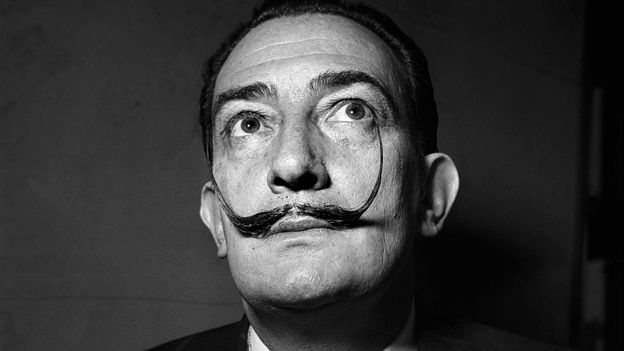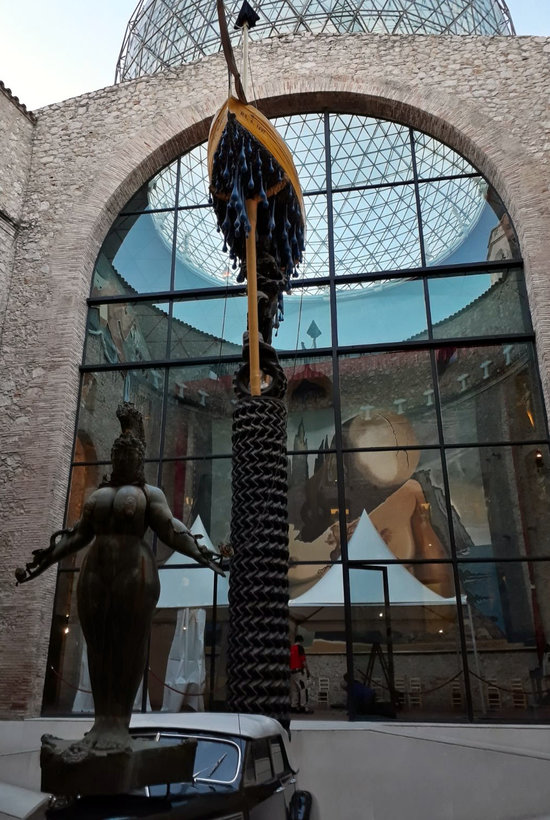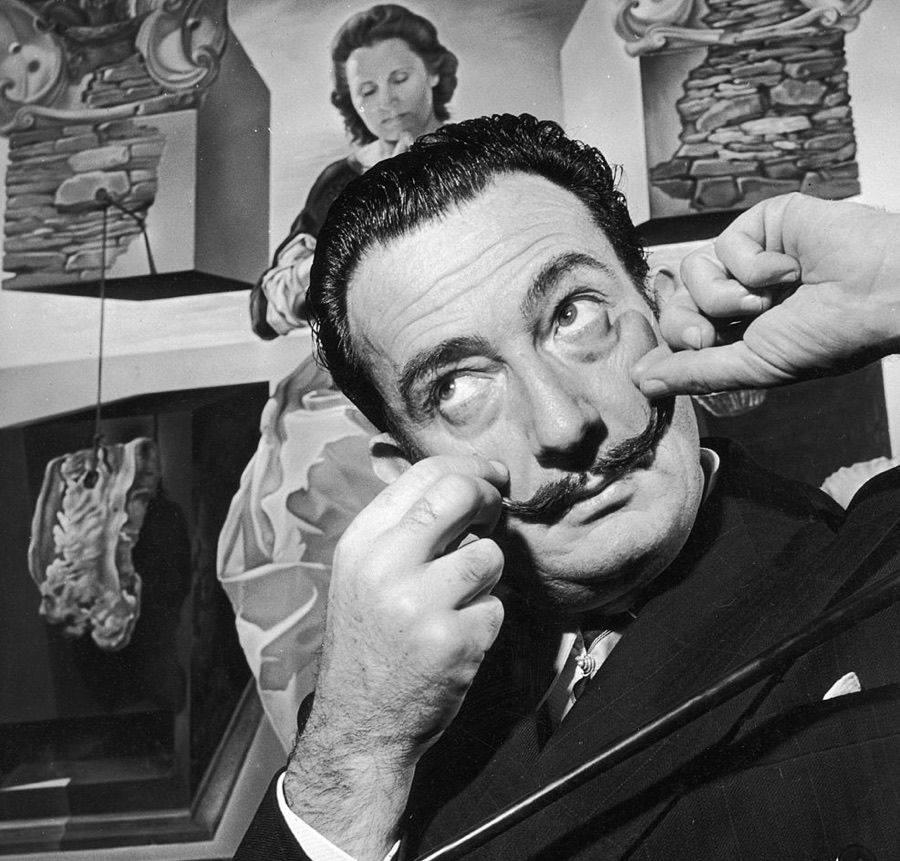His particular technique reflected in his paintings, sculptures, jewelry, unusual films and all his interactive artistic production marked the beginning of a new generation of imaginative expression, notes the website of the Dalí Museum in Florida, United States.
But it's not just Dalí's art that's eccentric. His private life was full of characteristics that made him an unusual man.
In 1934 he married Elena Ivanovna Diakonova, or Gala, as she was known. The couple had no children, but lived an open marriage at a time when this type of relationship was very rare. They regularly organized orgies at his house, although it is said that Dalí only liked to watch, not participate.
And these particularities were also observed in his physical appearance. How can we talk about Dalí without mentioning his moustache?
The painter even wrote a book of absurd humor, with his photographer friend Philippe Halsman, called Dalí's Moustache. The first edition was published in October 1954 in New York; slightly modified French editions followed in the 1980s and 1990s.
In a 2010 poll, Salvador Dalí was voted the owner of the most famous moustache of all time. And, unsurprisingly, in the world championship of beards and moustaches, the "Dali moustache" has its own category.
But how did Dalí create and maintain his thin, pointed moustache? One day he told the BBC his secret.
"My moustache is very happy"
66 years ago, on May 4, 1955, Dalí was interviewed by Malcolm Muggeridge, a BBC presenter. The conversation was in English, not an easy language for the artist, who spoke Catalan, Spanish and French.

"My English is very, very problematic. But that's not important because if someone can grasp a small piece of my ideas, that's absolutely enough, because the ideas of 'Dalian' have tremendous germinating power," he said.
The presenter began the interview bluntly: "How do you produce such a wonderful moustache?" Dalí said that he initially used a natural product: a fruit, the date.
"At the end of the meal, I didn't clean my fingers and I applied a little to my moustache and it stayed like that all afternoon. I was very efficient," he explained.
As the years passed and he sported the moustache that was already a fundamental part of his identity, date oil was no longer practical. Dalí explained that he later began to use an industrial product to maintain the strength of his personal brand. It was a kind of wax or ointment of Hungarian origin.
The French writer Marcel Proust used the same product. He used the wax in a different way... more depressing and melancholy," says Salvador Dalí. "On the contrary, my moustache is very cheerful, very pointed, very aggressive"
The artist also explained that at night he would clean the moustache and it would return to its natural position with a much softer texture. And in the morning, it only took a few minutes to bring the moustache back to life.
"I only need three minutes to groom my moustache," he explained. "And every day it gets more practical for my inspiration," he said.
"Perfect moustache"
Salvador Dalí died of heart failure in 1989, aged 84, in Figueres, Spain, the city where he was born. His body was buried in the crypt of the Dalí Museum.
In 2017, his body was exhumed to obtain DNA samples for a paternity case that came back negative.
And he took such good care of his moustache during his lifetime that 28 years after his death, when his body was exhumed, the moustache was still in perfect condition.


"It was like a miracle... his moustache was perfect, his hair was intact," Narcis Bardalet, who was in charge of embalming Dalí's body, said at the time.
It's clear that the artist was an extraordinary man in life and also after his death. And his moustache is a reflection of that.
"Every morning when I get up, I once again experience a supreme pleasure, that of being Salvador Dalí," said the artist, according to the museum's website.






